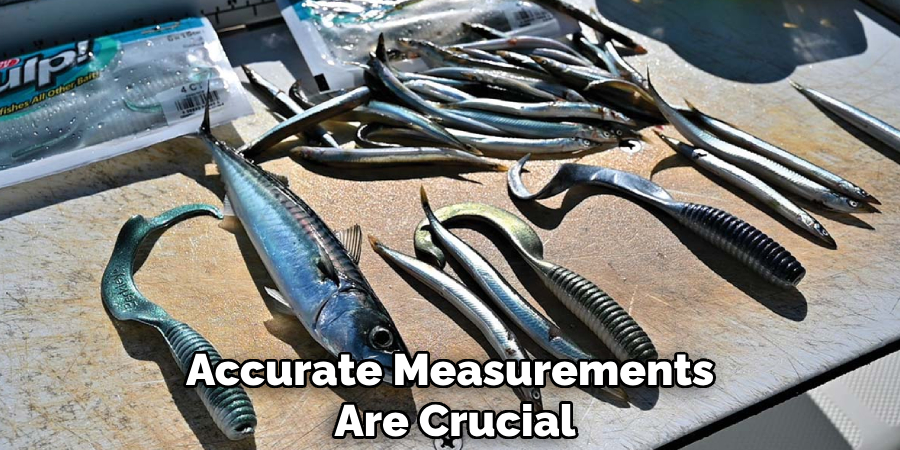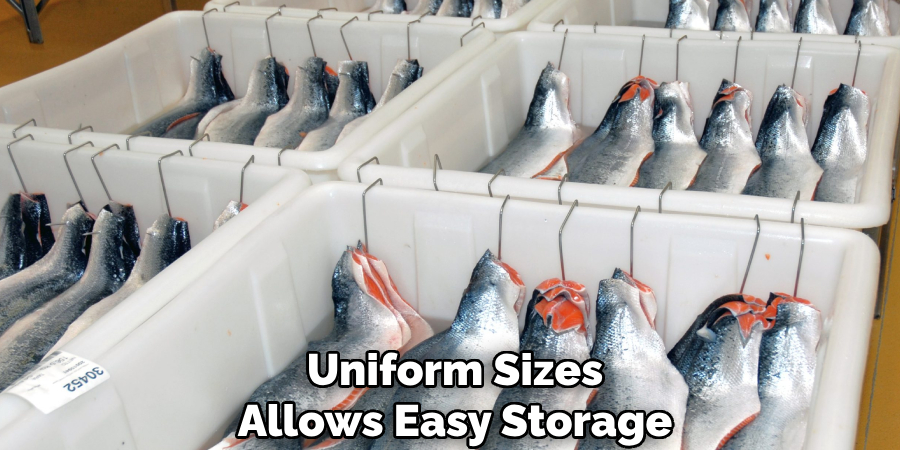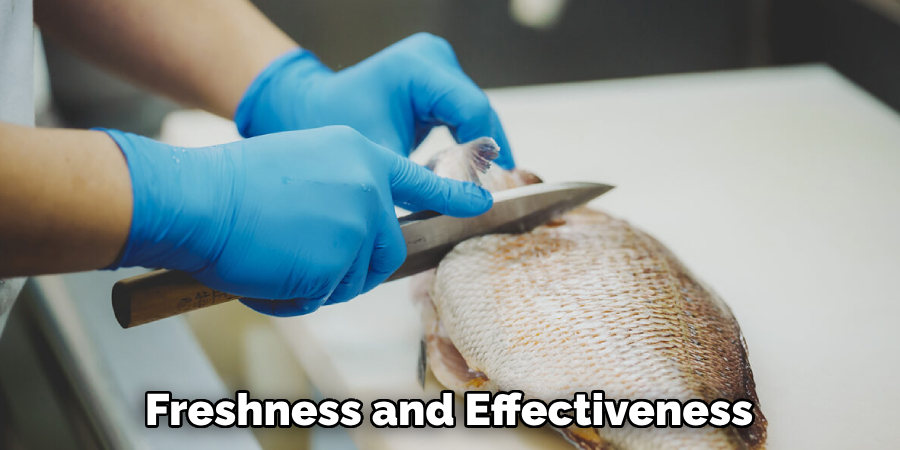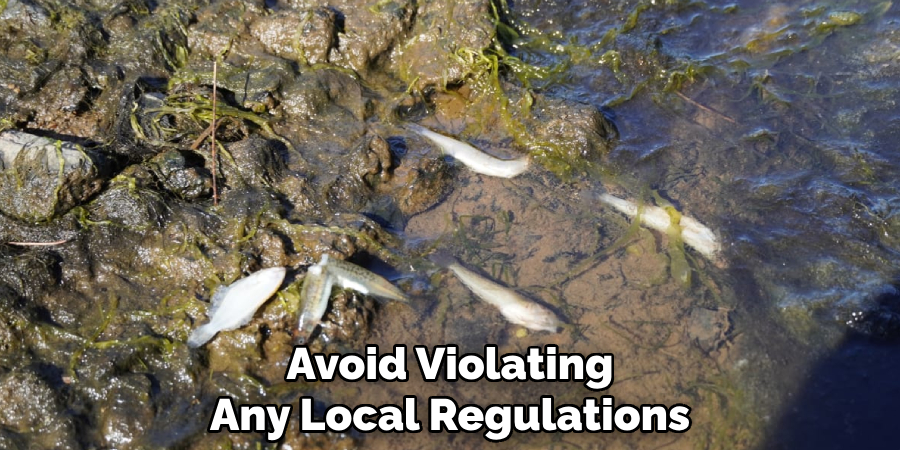Are you looking for the perfect bait to catch trout on your next fishing trip? Look no further!
Fishing for trout can be an exhilarating outdoor activity, but having the right bait is crucial to successfully luring these elusive fish. Making your trout bait allows you to customize recipes for specific conditions and fish preferences, offering a personal touch to your fishing experience. Homemade bait is often more effective than store-bought options, allowing for creative experimentation with ingredients that attract trout’s senses.
Whether you’re a seasoned angler or just starting out, learning how to make trout bait can enhance your fishing trips and potentially increase your catch rate. In the following sections, we will explore various methods and ingredients to create irresistible trout bait that appeals to these freshwater fish.

What Will You Need?
Before we dive into the different recipes for trout bait, here are some essential materials and tools you will need to get started:
- A mixing bowl
- Measuring cups and spoons
- Mixing utensils (spoons or spatulas)
- Airtight containers for storing bait
- Oven or stovetop (depending on the recipe)
Having these supplies on hand will make making your trout bait much smoother. Now, let’s examine some popular ingredients and recipes for homemade trout bait.
10 Easy Steps on How to Make Trout Bait
Step 1. Measure Ingredients:
Begin by gathering all the necessary ingredients for your chosen trout bait recipe. Using your measuring cups and spoons, carefully measure each component according to the recipe requirements. Accurate measurements are crucial in achieving the right scent, texture, and flavor balance that will attract trout. Typical ingredients for trout bait include flour, cornmeal, garlic powder, cheese, and fish oil, but feel free to experiment with other elements that might appeal to the trout in your fishing area. Precision in this step ensures the consistency and effectiveness of your bait, setting the foundation for successful fishing.

Step 2. Combine Dry Ingredients:
Once you have measured all your ingredients, combine the dry components in the mixing bowl. Ingredients such as flour and cornmeal should be thoroughly mixed to create a uniform base. Mixing the dry ingredients first ensures that the flavor and scent elements, like garlic powder, are evenly distributed throughout the bait. This homogeneous mixture forms the foundation of your bait’s texture and consistency, critical to its effectiveness in luring trout. Remember, the goal is to create a balanced mixture that will hold together well and release enticing smells in the water.
Step 3. Add Wet Ingredients:
With the dry ingredients blended, it’s time to incorporate the wet components into your mixture. Add small amounts of liquid ingredients such as water, fish oil, or melted cheese to the mixing bowl. Use a mixing utensil, such as a spoon or spatula, to stir the mixture continuously while adding the liquids. The goal is to achieve a dough-like consistency that is pliable yet firm enough to hold its shape. Be careful to add only a little liquid at once, as this can result in a runny mixture that won’t stay together. Adjust the quantity of wet ingredients to reach the ideal consistency for forming bait balls or other preferred shapes.
Step 4. Knead the Dough:
Once your mixture has reached the desired consistency, it’s important to knead the dough to ensure all ingredients are thoroughly blended. With clean hands, gently fold and press the dough within the mixing bowl, turning it over repeatedly until the mixture is smooth and uniform in texture. This step is critical as kneading helps to activate the gluten in flour-based mixtures, enhancing elasticity and binding capabilities. Properly kneaded dough ensures your bait will hold together effectively and maintain shape while casting and submerging in water. Take your time with this process, as a well-kneaded bait is crucial for successful trout fishing.
Step 5. Shape the Bait:
After achieving a smooth and uniform dough, it’s time to shape your bait into the desired form. Take a small portion of the dough and roll it between your palms to create small balls, typically about the size of a marble. Shaping the bait into small, uniform sizes allows easy storage and ensures consistent performance during fishing. If you prefer other shapes or sizes, such as cylindrical forms, feel free to experiment to see what works best for your fishing strategy and the fish in your area. Having uniformly shaped bait ensures even distribution of scent and flavor, enhancing their overall attractiveness to trout.

Step 6. Cook the Bait (Optional):
Cooking the bait might enhance its effectiveness depending on the recipe you’re following and the preference of the trout you’re targeting. Preheat your oven to a low temperature, around 200°F (93°C), and line a baking tray with parchment paper. Arrange the shaped bait balls evenly on the tray and bake them for 15-20 minutes. This process can help to firm up the bait, making it more durable and capable of withstanding the wear and tear of casting. Monitor the baking process closely to avoid overcooking, which can make the bait too complex and less appealing to trout. Cooking is an optional step, but it can be beneficial in creating longer-lasting and robust bait that stays on the hook longer.
Step 7. Cool the Bait:
After cooking, remove the bait from the oven and allow it to cool completely. Placing the bait on a wire rack or clean surface can facilitate cooling by providing airflow around the bait balls. Cooling is an important step, as it helps the bait to reach its final hardness and enhances its durability for storage and use. Make sure the bait is thoroughly cooled before proceeding to storage. Handling cooled bait is more accessible and ensures it maintains its shape when stored, so patience at this stage will lead to better results on your next fishing trip.
Step 8. Store the Bait:
Once the bait has cooled completely, it’s essential to store it properly to maintain its freshness and effectiveness. Place the bait balls in an airtight container or plastic zipper bag, ensuring they are sealed tightly to prevent moisture or air from reaching inside. Proper storage will help preserve the bait’s texture and scent, preparing it for your next fishing trip. Store the bait in a cool, dry place, such as a refrigerator, to extend its shelf life for optimal results. With the bait securely stored, you’re prepared for spontaneous fishing expeditions without worrying about the bait’s quality deteriorating over time.

Step 9. Test the Bait:
Before heading out for a fishing trip, it’s beneficial to test the effectiveness of your homemade bait. Conduct a small trial in a controlled environment, such as a local pond or fish tank with trout, to observe how the bait performs. Pay attention to how well the bait retains its shape in the water, its scent release, and whether it’s attractive to the fish. Adjustments to the recipe may be needed based on these observations. Testing ensures that any necessary tweaks can be made to maximize the bait’s appeal, increasing your likelihood of success when fishing in natural settings.
Step 10. Adjust and Repeat:
After testing your bait, take note of any areas that need improvement. If the bait did not attract fish, consider altering the ingredient ratio or trying new scents and flavors that may be more appealing to trout in your fishing area. Repeating the bait-making process with minor tweaks can help you perfect the recipe over time, ensuring a more successful catch. Keep a log of what works and what doesn’t, as this will serve as a valuable resource for future bait preparation. Remember, experimentation and adaptation are crucial to creating effective bait tailored to the preferences of the local trout population.
Following these ten simple steps, you can create your homemade bait specifically designed for trout fishing.
5 Things You Should Avoid
- Using Overly Strong Scents: While it’s essential for bait to be attractive to trout, using overly strong or unnatural scents can be off-putting rather than enticing. Stick to natural scents that mimic the trout’s regular diet.
- Adding Unrelated Ingredients: Including random or unrelated ingredients might seem creative, but it could backfire by making the bait unappealing. Use ingredients known to attract trout, such as cornmeal or cheese.
- Neglecting Texture: The texture of your bait matters. Avoid making it too hard or too mushy, as it may not hold well on the hook or appeal to the trout. Aim for a balanced consistency that is firm yet pliable.
- Ignoring Local Regulations: It’s essential to be aware of and avoid violating any local regulations regarding bait usage. Some areas have specific rules about what can and cannot be used for bait.
- Using Too Much Color: While color can enhance the bait’s attractiveness, using too much artificial coloring can deter trout. Stick to natural or subtlely enhanced hues that resemble the trout’s natural food sources.

Conclusion
Crafting effective trout bait requires a harmonious balance of scent, ingredients, texture, and color, all while adhering to local fishing regulations.
Focusing on natural elements that mimic the trout’s diet, avoiding overpowering or unfamiliar additives, and ensuring the bait is appropriately textured and subtly colored increases the likelihood of attracting more fish. Remember, successful bait is not just about creativity but about understanding the preferences and behaviors of trout in their natural habitat.
Hopefully, the article on how to make trout bait has provided valuable insights and tips to help you improve your fishing game. Happy bait-making and happy fishing!
About the Author
Jennifer Branett is the author of Fishy Kayak and an expert in fish-related fields, with over 10 years of experience. Her work blends passion for fishing with a commitment to conservation.
Educational Background
Degree: Bachelor’s in Marine Biology
Institution: University of California, Santa Barbara
Specializations: Aquatic ecosystems, fish behavior, and sustainable practices
Professional Experience
Conservation Projects:
Collaborated with local organizations to restore aquatic habitats
Developed educational programs on sustainable fishing practices
Publications:
Authored articles for fishing magazines and environmental journals
Featured speaker at fishing expos and conservation conferences
Key Areas of Expertise
Fishing Techniques:
Kayak fishing strategies
Freshwater and saltwater fishing methods
Environmental Stewardship:
Advocacy for sustainable fishing
Promoting biodiversity in aquatic environments
Awards and Recognition
Recipient of the [Specific Award Name] for contributions to marine conservation
Recognized as a leading voice in the fishing community by [Organization/Publication Name]
Community Engagement
Workshops and Seminars:
Regularly hosts events to educate anglers on sustainable practices
Engages with youth programs to inspire the next generation of fishers
Online Presence:
Maintains an active blog sharing tips, stories, and conservation efforts
Engages with followers on social media to promote fishing ethics
Personal Interests
Enjoys kayaking in scenic locations
Passionate about photography, capturing the beauty of nature
Advocates for local conservation efforts in her community
